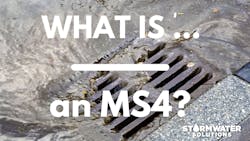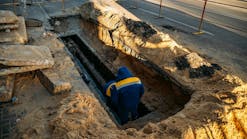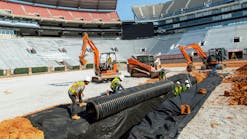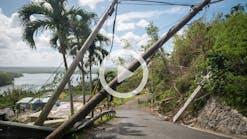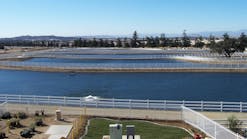What does MS4 stand for?
The short story is that MS4 stands for municipal separate storm sewer system. Stormwater Maui, specifically, explains it as a permitted storm water drainage system. But the purpose and role of an MS4 is more expansive. In this article, we will explore MS4s – what they do, how they work and more.
According to the United States Environmental Protection Agency (EPA), an MS4 is a conveyance, or system of conveyances, that is:
- “owned by a state, city, town, village, or other public entity that discharges to waters of the U.S.,
- designed or used to collect or convey stormwater (e.g., storm drains, pipes, ditches),
- not a combined sewer, and
- not part of a sewage treatment plant, or publicly owned treatment works (POTW).”
Of course, it would be remiss to mention MS4s without discussing the National Pollutant Discharge Elimination System (NPDES) permit program. To comply with appropriate federal regulations, MS4s are typically designated as Phase I or Phase II and operate under NPDES permits, which controls water pollution by designating point sources that can discharge pollutants into U.S. waters.
Phase I MS4s are historically for medium and large cities that are home to more than 100,000, while Phase II applies to urbanized areas defined by the U.S. Census Bureau, MS4s designated by permitting authority and non-traditional MS4s, including public universities, departments of transportation hospitals and prisons. A June 2023 ruling by the EPA replaced “urbanized area” in Phase II with “urbanized areas with a population of at least 50,000.”
How many MS4s are there in the United States?
"There are approximately 7,250 permitted Municipal Separate Storm Sewer Systems (MS4s), including large and small MS4s that exist nationwide, operating under a National Pollutant Discharge Elimination System (NPDES) MS4 permit,” according to the EPA.
The National Municipal Stormwater Alliance (NMSA), is a 501(c)(3), exists to support MS4 permittees and works with groups, such as WEF, on uniting the MS4 community. NMSA has members from 24 states in 9 of the 10 EPA regions, which represents a network of more than 4,000 MS4s.
Why are MS4s important?
MS4s each develop a stormwater management program (SWMP) that helps them decide how to reduce the discharge of pollutants from its sewer system. According to the EPA, SWMPs address the following topic areas:
- Construction Site Runoff Control
- Illicit Discharge Detection and Elimination
- Pollution Prevention/Good Housekeeping
- Post-Construction Runoff Control
- Public Education and Outreach
- Public Involvement/Participation
- Program Effectiveness
- Total Maximum Daily Loads
What are some MS4 challenges?
In 2018, the Water Environment Federation (WEF) published its first National Municipal Separate Storm Sewer System (MS4) Needs Assessment Survey results report. That survey has been followed up biannually, with the most recent survey being conducted in 2022. In 2023, WEF released the results of the survey and said the 2022 survey received responses from 47 states, Washington D.C. and Puerto Rico.
Based on the 2022 results, there is approximately a $6.2 billion annual funding gap for all MS4s in the U.S. The survey also found that MS4s across the country face similar challenges regarding maintaining infrastructure, securing funding and adressing workforce needs.

Katie Johns
Katie Johns, editor-in-chief of Stormwater Solutions, graduated from the University of Missouri in 2016 with a Bachelor of Journalism and a Bachelor of Arts in Spanish. Johns joined the Stormwater Solutions team in September 2019. Johns also helps plan the annual StormCon conference and co-hosts the Talking Under Water podcast. Prior to entering the B2B industry, she worked as a newspaper reporter and editor in Sarasota, Florida, and a magazine assistant editor in the Chicago suburbs. She can be reached at [email protected].
